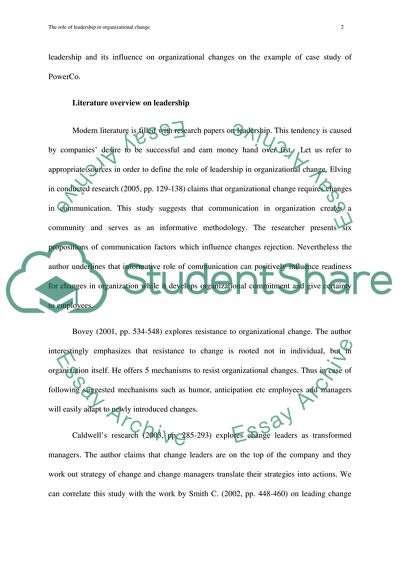Cite this document
(“The role of leadership in organisational change Essay”, n.d.)
The role of leadership in organisational change Essay. Retrieved from https://studentshare.org/miscellaneous/1563238-the-role-of-leadership-in-organisational-change
The role of leadership in organisational change Essay. Retrieved from https://studentshare.org/miscellaneous/1563238-the-role-of-leadership-in-organisational-change
(The Role of Leadership in Organisational Change Essay)
The Role of Leadership in Organisational Change Essay. https://studentshare.org/miscellaneous/1563238-the-role-of-leadership-in-organisational-change.
The Role of Leadership in Organisational Change Essay. https://studentshare.org/miscellaneous/1563238-the-role-of-leadership-in-organisational-change.
“The Role of Leadership in Organisational Change Essay”, n.d. https://studentshare.org/miscellaneous/1563238-the-role-of-leadership-in-organisational-change.


